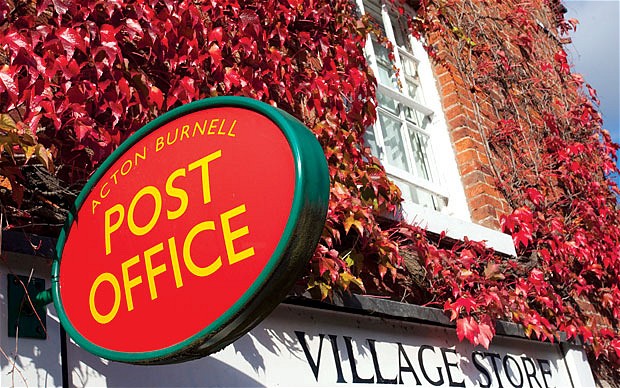The Post Office and major UK banks have signed a deal that will give more people access to banking services. It comes at a time when banks across the country are axing branches. Under the new arrangements, 99% of UK personal bank customers and over 75% of business customers will be able to do their […]
 The Post Office and major UK banks have signed a deal that will give more people access to banking services. It comes at a time when banks across the country are axing branches.
The Post Office and major UK banks have signed a deal that will give more people access to banking services. It comes at a time when banks across the country are axing branches.
Under the new arrangements, 99% of UK personal bank customers and over 75% of business customers will be able to do their day-to-day banking at the Post Office, as a new industry-wide agreement with UK banks comes into effect.
The agreement will bring together the Post Office’s existing arrangements with individual banks into a single set of cash and cheque services available to customers of virtually all UK banks.
Card-based transactions will enable real-time credit and debit payments into customer accounts.
Nick Kennett, chief executive of Post Office financial services, said: “This is great news for both personal and business customers of our partner banks. We are working with banks to ensure that our network of bricks and mortar locations gives consistent and widest possible availability of face-to-face banking services across the UK, with many customers already benefitting from this.”
Last year, the Post Office carried out 110 million banking transactions across its network – an average of over 200 a minute and a 6% increase from the previous year.
This is set to increase even further, as the new simplified service will offer easy access to day-to-day banking for both personal and business customers offering cash withdrawals, cash and cheque deposits and balance enquiries.
The Post Office said customers will also benefit from longer opening hours and over 4,000 branches opening on Sundays.
Over 40 UK banks and building societies have signed up to the scheme, including Nationwide Building Society, Halifax, Santander, Royal Bank of Scotland, HSBC, First Direct, Lloyds Bank, NatWest Bank, Bank of Ireland, TSB, Barclays Bank, Danske Bank, Handelsbanken Clydesdale Bank, APS, ThinkMoney, Yorkshire Bank, Allied Irish Bank, Virgin Money, Co-op Bank, and Metrobank.
“Access to cash plays a vital role in many local communities, acting as the lifeblood to consumers and small businesses. We offer unrivalled access to day-to-day banking through our extensive branch network with more branches now open for longer and on Sundays. Making banking services available through Post Offices better and more efficient will significantly improve overall ease of access, and ensure we are continuing to reach vulnerable customers and those in remote areas, who depend on it most,” said Kennett.
According to Which?, high street banks have closed more than 1,000 branches across the UK in the past two years.
Its research found that 1,046 bank branches were shut between January 2015 and January 2017. HSBC has cut the most branches, closing 321 (a quarter of its network), followed by RBS Group, closing 191 branches (10% of its network) and Lloyds Banking Group (Lloyds, Halifax and Bank of Scotland), closing 180 branches (14% of its network).
Most banks have cited the growth of online banking as the reason for closing branches. However, despite the rise in online banking, there are still around 20 million adults that don’t use it and among them will be people who aren’t online and those with a poor broadband connection.
Business minister Margot James said: “Millions of consumers and small businesses across the UK will now benefit from unrivalled access to banking services, including on Sundays, thanks to the Post Office. This is the biggest expansion in branch banking services in a generation and I am delighted the network is able to offer these services to so many customers.”














